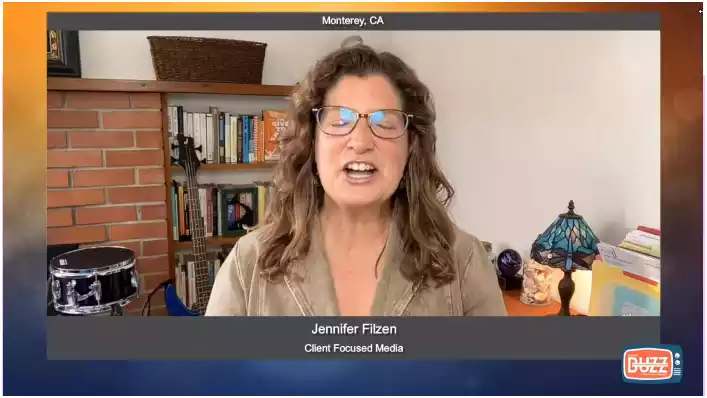Submitting Prior Authorization: A Comprehensive Guide to Navigating the Healthcare Approval Maze
Navigate the submitting prior authorizationwith ease. Discover step-by-step guidance, tackle common challenges, and learn strategies to ensure timely approvals for patient care. Read on to master the submission process.

Imagine a world where waiting in queues for medical assistance is a thing of the past, and healthcare providers are free from repetitive administrative tasks. Technological advancements are making this a reality, transforming patient care and administrative efficiency. Many healthcare organizations are benefiting from these digital solutions. With so many virtual assistant options, how do you choose the best one?
Let’s start!
Table of Contents
Submitting Prior Authorization

Understanding Prior Authorization
Prior authorization is a cost control measure mandated by health insurance providers before they approve coverage for prescribed medications, medical procedures, or services. This tool ensures that patients receive treatments based on necessity while avoiding unnecessary services that could inflate costs for insurers and patients.
Significance of Prior Authorization
The main goal of authorization is to confirm that the prescribed treatment is the suitable and cost-efficient option available. It encourages using medications and services, potentially reducing the chances of treatments that could result in adverse effects or other health issues. Additionally, authorization aids in managing healthcare expenses by discouraging pricier treatments when expensive yet equally effective alternatives exist.
Steps for Submitting Prior Authorization:
- Gathering Patient Information: The initial step in submitting an authorization request involves collecting patient details, include the patient’s name, date of birth, insurance information, and medical background. Documenting the patient’s condition and explaining the proposed treatment is essential to secure approval.
- Understand the requirements set by each health insurance provider for authorization requests: Reviewing the insurer’s policy on authorizations, which is usually accessible on their website, is crucial. Familiarizing yourself with the forms, paperwork, and deadlines can help prevent any delays in processing your request.
- As healthcare providers require, fill out the insurance company’s authorization form: This form typically asks for information about the treatment or medication the patient is taking and a clinical justification for the chosen course of action. Including supporting documents like test results, imaging scans, or medical notes can strengthen your request.
- Submitting Your Request: Once you’ve completed the authorization form, it must be promptly sent to your insurance provider. This can be done online through a designated portal or via fax or mail. Ensuring all necessary paperwork is included and following the insurer’s submission guidelines is essential to avoid any rejections or delays. Tracking the progress of an authorization request after submission is essential. Some insurance companies offer tools to monitor request statuses, while others may require follow-up calls. Responding promptly to any information requests from the insurer can help speed up the approval process.
Common Issues with Prior Authorization
- Complex and Time-Consuming Processes
The intricacies and time-consuming nature of the authorization procedure can pose a challenge for healthcare providers. Navigating systems, repetitive paperwork, and long waiting periods can be particularly difficult for practices with limited administrative assistance. - Denials and Appeals
Prior authorization requests may be denied for documentation, lack of medical necessity, or failure to comply with the insurer’s criteria. Understanding the reasons for denials and being prepared to submit an appeal with supporting details can assist in overturning these decisions. - Communication Breakdowns
Effective communication between healthcare providers and insurers is crucial during the authorization process. Misunderstandings or delays in sharing information can result in prolonged waiting times or denials. Ensuring precise and timely communication can help mitigate these challenges.
Strategies to Improve Prior Authorization Submissions

- Streamlined Documentation
Implementing a robust documentation system can help streamline the prior authorization process. Using electronic health records (EHR) to maintain comprehensive patient records and integrating prior authorization software can facilitate efficient form completion and submission. - Training and Education
Providing regular training and education for healthcare staff on the latest prior authorization requirements and procedures can help improve submission accuracy and efficiency. Keeping abreast of any changes in insurer policies or new developments in medical guidelines is essential.
- Leveraging Technology
Technology can play a significant role in simplifying the prior authorization process. Utilizing electronic prior authorization (ePA) systems can reduce the need for manual entry, minimize errors, and expedite the approval process. ePA systems often integrate with EHRs, allowing for seamless information transfer and real-time tracking of requests. - Maintain Open Lines of Communication
Establishing and maintaining open lines of communication with insurance representatives can aid in understanding specific requirements and resolving issues promptly. Regular follow-ups and proactive engagement with insurers can lead to smoother processes and quicker resolutions.
I'm very thankful for Portiva who I know is looking after my practice while I'm gone the virtual assistants can manage prescription refills, documents they can triage patients and just kind of answer administrative questions and they can handle a lot on their own. But also, they're very good about contacting me if there's any emergency or anything I need to attend to. So I'm very thankful for Portiva they can help almost any provider almost anywhere and it really allows for some good work-life balance as I'm getting to experience right now at my family farm so I'm very thankful for Portiva and I'm very happy to use their services"

Board Certified Family Medicine Physician

Portiva's Virtual Medical Assistant - I have all the support I need. There's somebody checking my email, any patient messages. Patients are still able to schedule and handle any scheduling issues and any kind of billing that needs to still go through. Portiva hands handles it all for me. I have support i have somebody that I can access 24/7 pretty much. It's all very seamless. If somebody has an emergency or needs a medication called in. I know that the va's at portiva will handle that for me.

Board Certified Family Medicine Physician

Real-World Examples

A large hospital network implemented a centralized prior authorization department to handle all requests. By using a dedicated team trained in insurance policies and equipped with advanced ePA software, the hospital significantly reduced the time required to obtain authorizations. This streamlined approach improved patient access to necessary treatments and reduced administrative burdens on healthcare providers.
Case Study 2: Small Clinic Adoption of ePA System
A small clinic faced numerous challenges with manual prior authorization processes, leading to delays and denials. Adoption of an ePA system integrated with their EHR not only sped up the submission process but also reduced errors and improved overall efficiency. The clinic reported higher approval rates and faster turnaround times, benefiting both the staff and patients.
In Summary
Efficiently navigating the authorization process is vital for healthcare providers and patients alike. It guarantees that patients receive treatments while managing costs and avoiding procedures. By comprehending the steps in tackling hurdles and employing effective strategies, healthcare providers can enhance their prior authorization submission processes, improving patient outcomes and streamlining operations.
Advancements in technology, continuous education, and influential communication play roles in simplifying this process. Despite existing challenges, a proactive approach rooted in knowledge can significantly diminish obstacles, making the journey through prior authorization smoother for all parties involved. Healthcare providers must enhance their prior authorization processes to consistently provide patient care. Submitting precise authorizations can significantly benefit the healthcare sector and patient well-being.
To learn more about appeal process that can enhance your medical practice. Discover more about Portiva and unlock a world of possibilities by visiting our homepage today!
- Preventing and addressing authorization denials effectively
- Prior authorization for improved patient access and healthcare delivery
- Managing prior authorization rules
- Prior authorization workflow for better patient care
- Overcoming challenges in authorization denials management
- Seamless monitoring with precertification tech
- Achieving success with prior authorization technology
- Key aspects of preauthorization
- Handling precertification requests and approvals
- Prior authorization and ensuring quality care
- Ensuring care with preauthorization strategies
- Precertification and virtual medical assistants
- Precertification for healthcare administrators
- Common challenges and solutions in precertification
- Managing prior authorization effectively
- Effective strategies for reviewing and updating prior authorization policies
- Supporting the policy of prior authorization
- Handling authorization denials in healthcare
- Addressing challenges with prior authorization

